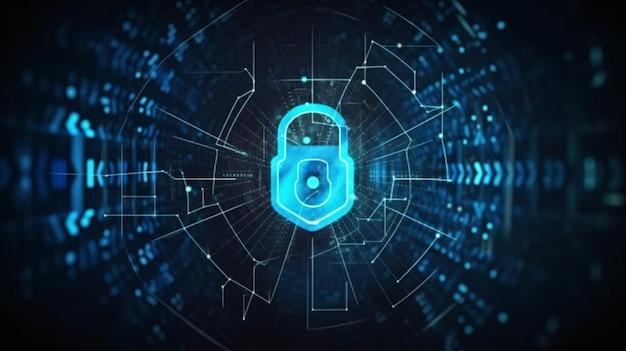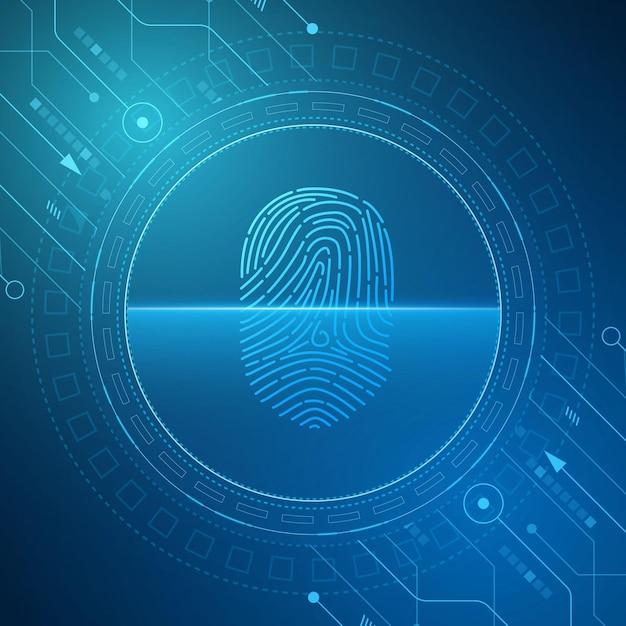Are you concerned about the increasing cybersecurity threats that pose a risk to your business? Do you want to ensure the protection of your valuable assets, information, and data? Look no further than SOC, the Security Operations Center!
SOC has become a buzzword in the cybersecurity industry, with businesses investing heavily in SOC services to protect their digital assets. SOC refers to a team of dedicated professionals, processes, and technologies to detect, analyze, and respond to security threats.
In this blog post, we will cover various aspects of SOC, including how it works, its applications, the different software and tools used, and how it can be leveraged for supply chain security. We will also explore the definition of SOC in cyber and its full form in cybersecurity, delving into its importance in banking and financial institutions.
In today’s fast-paced, technology-driven world, cybersecurity threats and breaches are becoming increasingly common. SOC plays a critical role in protecting the security of organizations’ digital assets. In this blog post, we will provide you with the information you need to understand SOC and its significance in cybersecurity.
So, sit back, relax, and join us as we take a deep dive into the world of SOC and how it can safeguard your business from potential threats. Let’s get started!
Understanding SOC for Cybersecurity
In the world of cybersecurity, there’s a lot of jargon thrown around. One term you might hear often is “SOC.” SOC stands for security operations center, and it’s an essential element of any robust cybersecurity program. Simply put, a SOC is a centralized team that’s tasked with monitoring an organization’s digital assets, identifying potential security threats, and responding to incidents when they occur. In this subsection, we’ll explore the ins and outs of SOC for cybersecurity.
What is a SOC
A SOC is a team of security professionals who specialize in monitoring an organization’s digital assets. This team is responsible for identifying anomalous activity and responding to potential security threats quickly. A SOC is typically staffed with security analysts, threat hunters, incident responders, and other cybersecurity experts. These professionals use a variety of tools and techniques to monitor an organization’s digital assets continuously.
Why is a SOC important
In today’s digital world, the threat of cyber attacks is constant. Organizations face an ever-evolving landscape of threats that can come from anywhere in the world. Any organization that handles sensitive data or operates critical infrastructure must have a robust cybersecurity program in place, and a SOC is a critical part of that program. A SOC helps ensure that potential security issues are identified and addressed quickly, minimizing the impact of a potential breach.
What are the key functions of a SOC
There are several key functions that a SOC performs to keep an organization safe. These include:
-
Threat monitoring: A SOC must continually monitor an organization’s digital assets. This includes watching for suspicious activity, identifying potential security threats, and assessing the risks associated with those threats.
-
Incident response: If a security incident occurs, the SOC is responsible for responding quickly and effectively. This includes identifying the source of the incident, containing it, and preventing any further damage.
-
Vulnerability management: A SOC is responsible for identifying vulnerabilities in an organization’s digital assets and ensuring that they’re patched or mitigated.
-
Threat intelligence: To stay ahead of potential threats, a SOC must be continually gathering and analyzing threat intelligence. This includes tracking emerging threats and monitoring known threat actors.
A SOC is an essential element of any robust cybersecurity program. It’s a team of experts tasked with monitoring an organization’s digital assets and responding to potential security threats quickly and effectively. By performing key functions such as threat monitoring, incident response, vulnerability management, and threat intelligence, a SOC helps keep organizations safe in a constantly evolving threat landscape.
What is SOC
A Security Operations Center (SOC) refers to a centralized unit that manages and monitors the security of an organization’s systems, networks, and data. The SOC is responsible for identifying, analyzing, and resolving security incidents in a timely and effective manner. The primary goal of a SOC is to ensure the organization’s critical assets are protected from unauthorized access, threats, and other cyber-attacks.
How Does SOC Work
The SOC is staffed by security analysts who are responsible for monitoring security alerts and events that are generated by various security tools and systems. The analysts use various tools and techniques to identify threats and assess their severity. Once a threat is identified, the analysts investigate the incident and take appropriate action to contain and mitigate the attack.
Why Do Organizations Need SOC
Organizations need SOC to ensure the security of their critical assets. Cyber threats are becoming more sophisticated, and attacks are increasing in frequency and severity. Without SOC, organizations may not be able to detect and respond to cyber threats in a timely and effective manner, which can lead to significant financial and reputational damage.
Key Components of SOC
The SOC is made up of several components, including people, processes, and technology. The key components include:
- Security Analysts: They are responsible for monitoring security alerts and events and investigating security incidents.
- Security Tools: The SOC uses various security tools and systems, including intrusion detection systems (IDS), security incident and event management (SIEM) tools, and threat intelligence platforms.
- Standard Operating Procedures (SOP): SOPs outline the processes and procedures that SOC analysts follow when investigating and responding to security incidents.
- Escalation Processes: Escalation processes ensure that security incidents are escalated to the appropriate personnel or teams for timely resolution.
- Metrics and Reporting: Metrics and reporting are used to measure the effectiveness of the SOC and provide visibility into the security posture of the organization.
In conclusion, SOC is an essential unit for organizations that want to protect their critical assets from cyber threats. The SOC is responsible for detecting, investigating, and responding to security incidents in a timely and effective manner. By leveraging people, processes, and technology, SOC can help organizations mitigate potential security risks and maintain a strong security posture.
SOC Security: Keeping Your Business Safe from Cyber Attacks
As a business owner, your number one priority is keeping your company and its assets safe. One of the most significant threats to your security today is cyber attacks. These attacks can be devastating, costing you millions of dollars in damages, lost revenue, and lost trust from your customers. That’s why having a SOC, or Security Operations Center, is essential.
What is a SOC
A SOC is a central location where your cybersecurity team can monitor your systems and networks for potential threats. They use advanced security software and toolsets to detect and respond to threats, ensuring that your business data stays safe and secure.
The Benefits of Having a SOC
Having a SOC has numerous benefits for your business. For starters, it helps you streamline your response to potential threats, allowing you to react faster and more efficiently. This speed and efficiency can save you valuable time and money, minimizing downtime and reducing the overall impact of attacks.
Another benefit of a SOC is that it provides an additional layer of protection for your business. Your SOC team can identify and analyze potential threats, providing insights into how to better protect your business against future attacks.
Best Practices for SOC Security
While having a SOC is an excellent first step toward securing your business against cyber attacks, there are several best practices you should follow to keep your SOC functioning optimally. These practices include:
- Keeping your security software up-to-date
- Educating your employees on cybersecurity risks and best practices
- Conducting regular vulnerability assessments and audits
- Creating a plan for disaster recovery and business continuity
By following these best practices, you can ensure that your SOC is functioning optimally and at peak capacity.
In conclusion, cyber attacks present a significant threat to your business today. By having a SOC, you’ll be able to better protect your business against these attacks, streamline your response time to potential threats, and provide an additional layer of security. By following best practices for SOC security and ensuring your SOC team is functioning optimally, you can keep your business safe and running smoothly.
SOC Software: Keep Your Cybersecurity in Check
In today’s digital age, cybersecurity has become one of the most pressing concerns for businesses and individuals alike. With cyber-attacks becoming more sophisticated and frequent, it’s not surprising that security experts recommend using SOC software to safeguard digital assets.
What is SOC software
SOC (Security Operations Center) software is a type of platform that monitors network traffic, analyzes security threats, and responds to incidents in real-time. This software is crucial in detecting and mitigating cyber-attacks before they cause any damage to the system or compromise data privacy.
Features of a SOC Software
SOC software has several features that enable it to detect and respond to threats quickly and efficiently. Here are some of the key features:
Real-Time Monitoring
SOC software continuously monitors network traffic and identifies any suspicious activity, such as malware or unauthorized access. The software sends alerts to the security team, who can then take the necessary steps to mitigate the threat.
Threat Intelligence
SOC software uses threat intelligence tools to monitor and analyze threats in real-time. This helps security teams to keep abreast of the latest attack trends and prepare for potential threats.
Incident Response
When a threat is detected, SOC software automates the incident response process, which helps to mitigate the attack’s impact. The software can isolate affected systems, block malicious traffic, and contain the attack.
Benefits of Using SOC Software
There are several benefits of using SOC software. Here are some of them:
Improved Cybersecurity
SOC software provides real-time monitoring, threat intelligence, and incident response capabilities, which help to improve cybersecurity and minimize the potential impact of cyber-attacks.
Reduced Downtime
By detecting and mitigating security threats before they cause any damage, SOC software helps businesses reduce the risk of costly downtime.
Compliance
SOC software helps businesses to comply with regulatory requirements related to data security and privacy. By monitoring network traffic and responding to incidents in real-time, businesses can demonstrate that they are taking adequate measures to protect sensitive data.
In conclusion, SOC software is a crucial tool for businesses that want to maintain cybersecurity in today’s digital age. By providing real-time monitoring, threat intelligence, and incident response capabilities, SOC software helps businesses to detect and mitigate cyber-attacks before they cause damage or compromise data privacy.
SOC for Supply Chain
In recent years, supply chain attacks have grown in popularity among hackers. Supply chain attacks occur when a third-party vendor is targeted, allowing hackers to gain access to its customers’ systems. These attacks are especially dangerous because they allow attackers to infiltrate multiple companies’ networks through a single point of entry.
Why Supply Chain Attacks Are Dangerous
A supply chain attack can cause massive damage to a company and its customers. For instance, a hacker may get access to a supply chain’s software, which could allow them to add malicious code and then have it spread to any customer who uses it. In cases where vendors have access to a company’s critical infrastructure, a supply chain breach may lead to significant financial losses and reputational damage.
Mitigating the Risk of Supply Chain Attacks
To mitigate the risk of a supply chain attack, it is essential to have robust security protocols in place. Companies must conduct regular security audits and risk assessments of their vendors to ensure they are following secure practices. It is critical to monitor vendors’ network activity to detect any suspicious behavior.
Another best practice is to implement a Security Operations Center (SOC) to manage security incidents proactively. A SOC is responsible for identifying and mitigating security threats, including those involving the supply chain. It provides continuous monitoring, real-time threat detection, and incident response that can extend beyond a company’s perimeter into its third-party vendors’ networks.
In conclusion, supply chain attacks are a growing threat in today’s interconnected world. As hackers continue to target third-party vendors, companies must take steps to reduce their risk and protect their customers. Implementing a SOC and following best practices such as regular security audits and network monitoring can significantly reduce the likelihood of a supply chain breach.
What is SOC in Cyber
If you’re new to the cybersecurity world, the term SOC might sound foreign to you. However, it’s a term you can’t avoid if you want to understand how cybersecurity works. SOC stands for Security Operations Center, which is a central location in an organization that manages all aspects of cybersecurity.
The role of SOC in cybersecurity
The primary role of a SOC is to monitor, detect, investigate, and respond to security incidents within an organization’s IT infrastructure. SOC teams are responsible for identifying security threats and vulnerabilities before they become serious problems. Once a threat is identified, the team must act quickly to contain it and prevent further damage.
The difference between SOC and NOC
If you’ve heard of NOC, the Network Operations Center, you might be wondering what the difference is between these two. While NOC’s primary responsibility is to ensure network infrastructure and services operate smoothly, SOC focuses on securing the network infrastructure against potential cyberattacks.
What makes up a SOC team
A basic SOC team consists of security analysts, incident responders, engineers, and managers. Security analysts are responsible for monitoring security alerts and identifying potential threats. Incident responders investigate security incidents and determine the best course of action to contain them. Engineers are responsible for maintaining and improving the security infrastructure, while managers provide guidance and support to the team.
In conclusion, SOC is an essential component of any organization’s cybersecurity strategy. It serves as the first line of defense against potential cyberattacks and helps ensure an organization’s IT infrastructure remains secure. By understanding what SOC is and how it operates, you’ll have a better appreciation for the importance of cybersecurity.
The Meaning of SOC in Banking and How It Works
You may have heard of SOC before, and you may be wondering what it stands for. Well, in the banking industry, SOC stands for “System and Organization Controls.” Essentially, SOC is a set of standards that companies use to assess their internal controls and ensure that they are operating effectively. SOC is used primarily in the financial and IT industries to ensure the security and integrity of data.
Why is SOC Important in Banking
Banking institutions are some of the most heavily regulated industries in the world. These regulations aim to protect the financial system against fraudulent activities, data breaches, and other forms of malpractice. SOC is particularly important because it provides a framework for banks to assess and demonstrate their compliance with these regulations. Without SOC, banks may be susceptible to internal control failures that could expose them to serious legal and financial consequences.
Types of SOC Reports
There are three types of SOC reports that banks can choose to abide by:
SOC 1
SOC 1 is the most common report that banks use. It is used to report on the controls that are relevant to financial statements. SOC 1 reports assess the effectiveness of controls that are intended to prevent material misstatements in financial statements.
SOC 2
SOC 2 reports are used to report on the effectiveness of a company’s controls related to the security, availability, processing integrity, confidentiality, and privacy of its system. SOC 2 is particularly relevant to companies that handle sensitive information like banks.
SOC 3
SOC 3 reports are designed for public use and can be shown to anyone who requests them. They provide an overview of the SOC 2 report and can be used to demonstrate a company’s compliance with SOC standards.
Banking institutions need to maintain high levels of integrity and compliance to protect themselves and their customers from fraudulent activities and data breaches. SOC provides a framework for banks to assess and demonstrate their compliance with these regulations. By abiding by SOC 1, 2, or 3 reports, banks can ensure the security and integrity of their data.
Security Operations Center
A Security Operations Center (SOC) is a facility that enables an organization to monitor, prevent, detect, and respond to cybersecurity incidents. It is the central hub where security teams can react to and coordinate threat responses across an organization’s entire IT infrastructure.
Importance of SOC
With increasing cyber threats, the importance of SOC cannot be overstated. The SOC’s primary focus is to provide 24/7 monitoring and detection of potential security threats and vulnerabilities. SOC teams use advanced technologies, such as artificial intelligence and machine learning, to sift through the massive amounts of data that are generated every day and identify possible security incidents.
SOC Services
SOCs offer a range of services, including security incident management, threat intelligence, vulnerability management, and compliance monitoring. They use various tools and technologies to provide these services, including firewalls, intrusion detection systems, security information, and event management platforms.
SOC Benefits
Investing in a SOC provides several benefits to organizations. It helps organizations identify and contain security breaches faster, minimizing the damage caused, and decreasing the time and cost associated with incident response. It can also help organizations prevent future incidents by proactively identifying and addressing security vulnerabilities.
In conclusion, SOC is a crucial component of an organization’s cybersecurity strategy. It provides real-time detection and mitigation of potential security incidents, ensuring the protection of sensitive data and infrastructure. Having a SOC in place ensures that an organization can respond to incidents quickly and efficiently, minimizing the negative impact on business operations.
SOC for Cybersecurity Report
After years of data breaches, cyber-attacks, and other malicious activities, cybersecurity has become a top concern for businesses and organizations of all sizes. Many of these businesses have responded to this threat by implementing a Security Operations Center (SOC), which is responsible for monitoring, detecting, and responding to cybersecurity incidents.
A recent report published by the SANS Institute titled “The State of Security Operations 2021” sheds some light on the current state of SOC operations and provides valuable insights into the cybersecurity landscape.
Key Findings of the Report
The report reveals that the number of SOCs has continued to increase, with 66% of organizations now having a dedicated SOC. However, the report also exposes a gap in SOC staffing, with only 27% of organizations having enough staff to fully operate their SOC.
The report also highlights that the top challenges faced by SOCs include keeping up with the latest threats and technologies, managing alerts and false positives, and attracting and retaining skilled staff.
Recommendations for Improving SOC Operations
The report outlines several recommendations for improving SOC operations, including investing in automation and orchestration tools, implementing a threat hunting program, and implementing a continuous improvement program.
Additionally, the report recommends that organizations focus on improving the metrics used to assess SOC effectiveness, including measuring the time to detect and respond to incidents and conducting regular tabletop exercises to test incident response plans.
The “State of Security Operations 2021” report provides valuable insights into the current state of SOCs and the cybersecurity landscape. Organizations can use the report’s findings and recommendations to improve the effectiveness of their own SOC operations and enhance their overall cybersecurity posture. As cyber threats continue to evolve, it is critical that organizations remain vigilant and proactively address these threats to protect their assets and data.
SOC Full Form in Cyber Security
If you’re new to the world of cybersecurity, you might have come across a term called SOC. It stands for Security Operations Center. The SOC is a team of security analysts responsible for monitoring, detecting, and responding to security incidents in an organization.
What Does a SOC Do
The SOC team uses various tools and technologies to monitor an organization’s network, servers, and endpoints. They also keep an eye on the organization’s cloud-based systems, such as SaaS applications and IaaS environments.
The primary role of the SOC team is to identify security incidents and respond to them promptly. They do this by analyzing security logs, running vulnerability assessments, and conducting penetration testing. The SOC team also works closely with other teams such as the Incident Response team, Forensics team, and Threat Intelligence team.
Why Do You Need a SOC
As businesses continue to rely more heavily on technology and digital infrastructure, the need for a SOC becomes more critical. Network intrusions, ransomware attacks, and other cyber threats are becoming more sophisticated and frequent. A security operations center can help ensure that an organization’s assets are protected from these types of attacks.
By having a SOC in place, an organization can detect and respond to security incidents quickly. They can limit the damage caused by an attack and prevent further compromise. This can reduce the downtime, financial loss, and reputational damage caused by a security incident.
In conclusion, SOC stands for Security Operations Center. It’s a team of security analysts responsible for monitoring, detecting, and responding to security incidents in an organization. A SOC is essential for any organization that wants to protect its assets and prevent cyber-attacks. If you’re interested in a career in cybersecurity, working in a SOC could be a great place to start.



